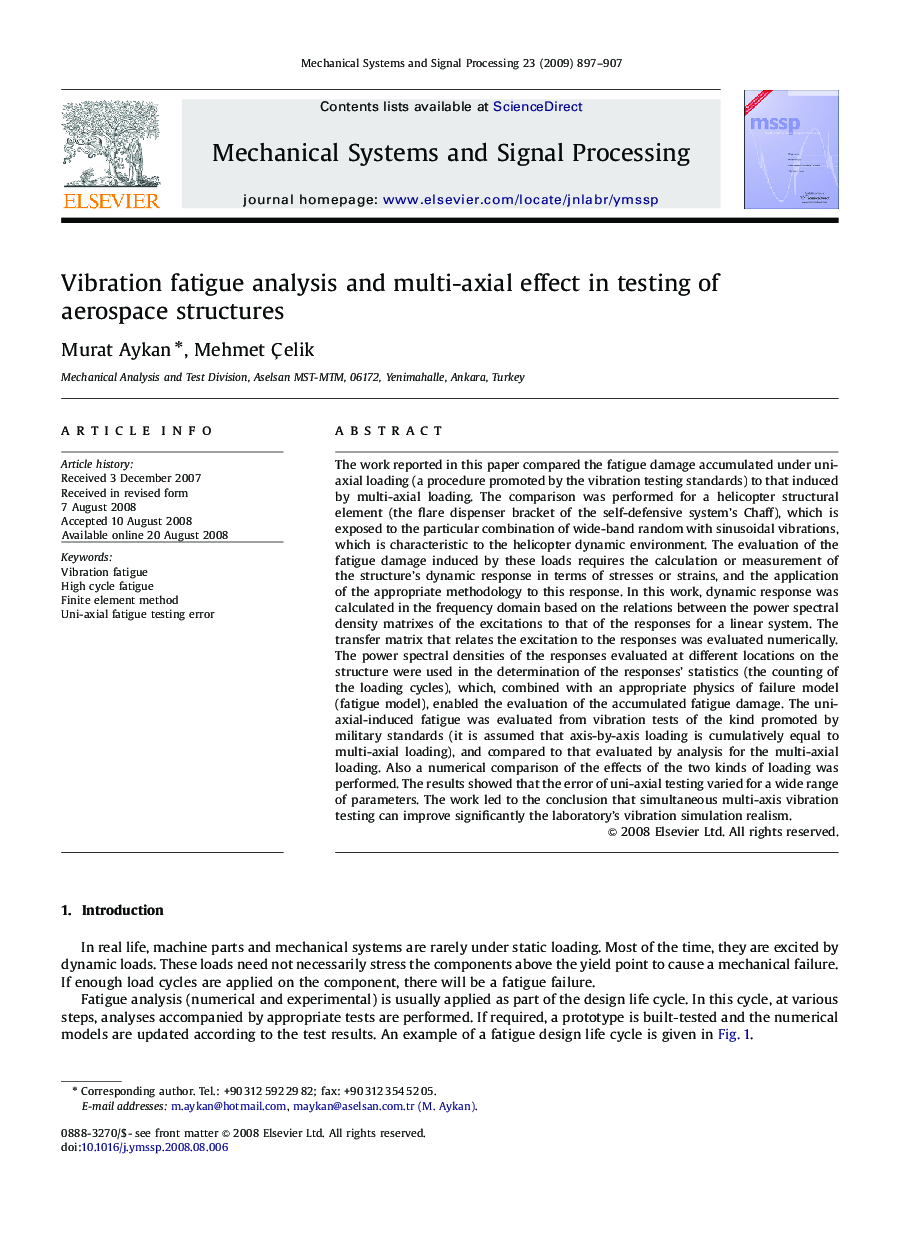| Article ID | Journal | Published Year | Pages | File Type |
|---|---|---|---|---|
| 565697 | Mechanical Systems and Signal Processing | 2009 | 11 Pages |
The work reported in this paper compared the fatigue damage accumulated under uni-axial loading (a procedure promoted by the vibration testing standards) to that induced by multi-axial loading. The comparison was performed for a helicopter structural element (the flare dispenser bracket of the self-defensive system's Chaff), which is exposed to the particular combination of wide-band random with sinusoidal vibrations, which is characteristic to the helicopter dynamic environment. The evaluation of the fatigue damage induced by these loads requires the calculation or measurement of the structure's dynamic response in terms of stresses or strains, and the application of the appropriate methodology to this response. In this work, dynamic response was calculated in the frequency domain based on the relations between the power spectral density matrixes of the excitations to that of the responses for a linear system. The transfer matrix that relates the excitation to the responses was evaluated numerically. The power spectral densities of the responses evaluated at different locations on the structure were used in the determination of the responses’ statistics (the counting of the loading cycles), which, combined with an appropriate physics of failure model (fatigue model), enabled the evaluation of the accumulated fatigue damage. The uni-axial-induced fatigue was evaluated from vibration tests of the kind promoted by military standards (it is assumed that axis-by-axis loading is cumulatively equal to multi-axial loading), and compared to that evaluated by analysis for the multi-axial loading. Also a numerical comparison of the effects of the two kinds of loading was performed. The results showed that the error of uni-axial testing varied for a wide range of parameters. The work led to the conclusion that simultaneous multi-axis vibration testing can improve significantly the laboratory's vibration simulation realism.
